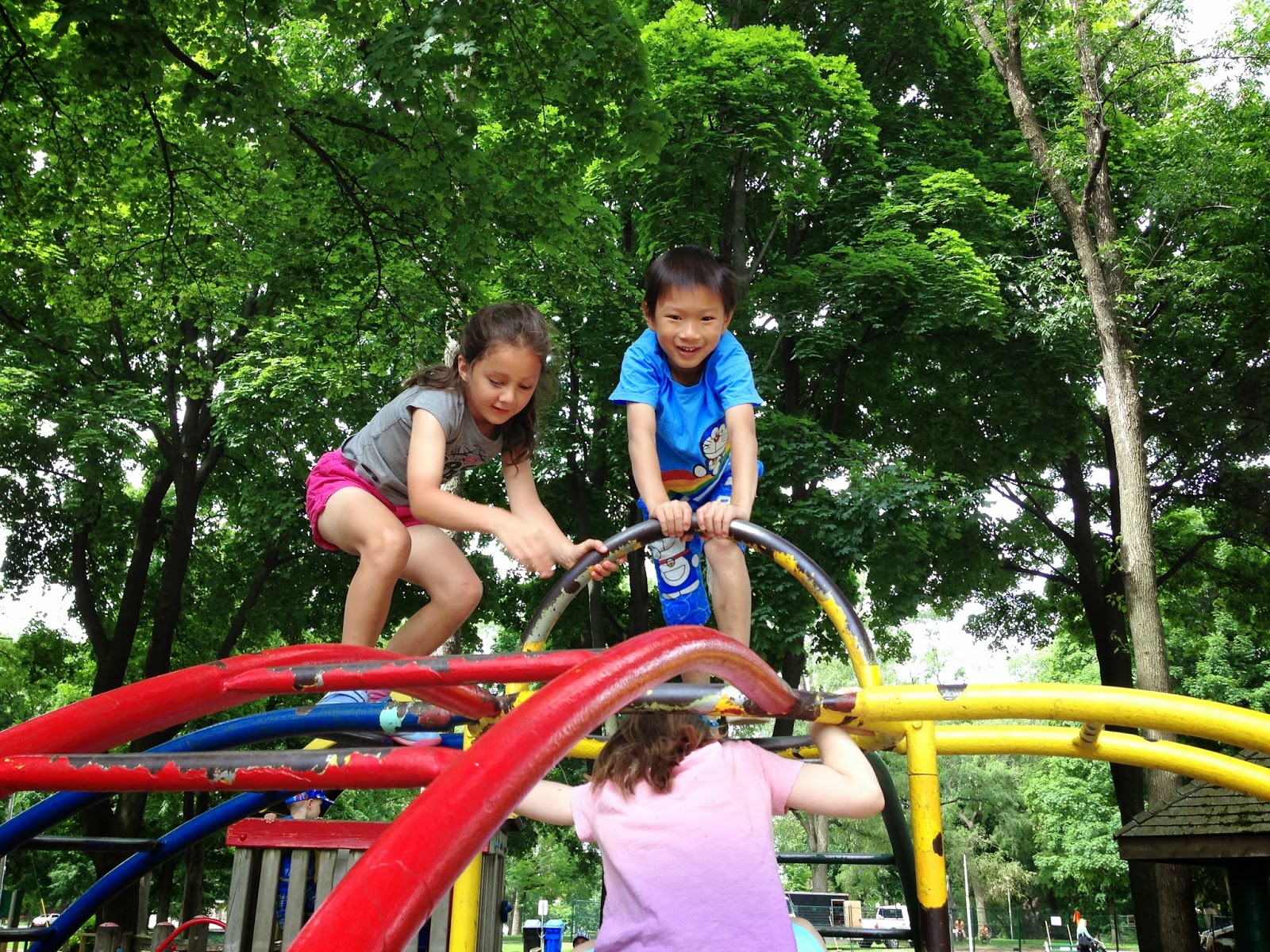Hi parents,
Please continue to read the posts from earlier this week to get more details on Monday's outing, returning books, and what we've been up to lately.
I still need at least 1 parent to come with us Monday, so please email me if you know you can come. (We can't do it without at least 1 parent with us!) You would need to meet us in Area 24 at 9:50 am and stay with us until we come back between 1-2 pm. All parents are welcome to join us at the park at any time during the day. I went over the expectations for what the kids need to wear and bring/not bring so they should be able to tell you what they need to remember Monday.
This afternoon, six grade 6 students joined us to run a bunch of probability centres. They were great leaders, and it was fun for me because we played the same games that I created for their class when they were in grade 3! Our students have been learning about predicting probability so quickly, that I thought they could manage these very same grade 3 games (omitting the parts about fractions). They did a great job and have brought home the activity book to show you. Due to a surprise fire alarm, we were unable to complete the last 2 rotations, so there are 2 activities left in the booklet that I hope you can enjoy doing at home. I've explained each activity in detail in the booklet, but here are a few extra notes on the 7 centres. Definitely talk about this over the weekend!
1. Dice: We had played this game before, so I was happy that most students remembered that their predictions should total 30, since we're going to roll the die 30 times. Some students even remembered a strategy we shared last week where we learned that you can make an informed prediction based on what would be fair. If the dice are fair, we should get each number 5 times (because there are 6 numbers, and 5+5+5+5+5+5=30). If your child predicted 5 for each number, that's really level 4 work! If your child made predictions that total 30, that's really good thinking... 3+! The results of the game don't matter as much as their predictions, but it's interesting to talk about whether their predictions were close to the result.
2. Cards: The plan is to draw 10 cards from a deck to see if we happen to draw the cards in the list. It's easier, of course, if you know a few things about a deck of cards, so their leader gave them some hints about how many of each thing exist in a deck. This was a good practice of the probability terms we've been using. For example, what are the chances of drawing five 2s? Pretty impossible, since there are only 4 in the whole deck! There are some interesting challenge questions at the bottom of the page that you can dive into at home.
3. Spinner: Again, good practice of the terms we've been using. Hopefully students can explain orally, if they didn't in writing, why they chose each term.
4. Cups: I collected about 20 Tim Horton's cups during Roll-Up-The-Rim. Students had to predict how many of these were winners before counting them up. The rest of this centre was a little advanced, but I know my students had a good discussion with their leader about whether it's worth it to buy a bunch of drinks in the hopes of winning something. If you win one time out of 6 (like I think I did), how much have you spent before you save anything?
5. Coin Toss: Super simple experiment - if you toss the coin 40 times, how many times do you think it will land on heads and tails? Is it more likely that the coin will land on one side or the other, or are both equally possible?
6. Lottery: All members of the group wrote their name on 3 pieces of paper and put them in a bag. They determined the chance of their name being drawn (equal chance) and their leader helped them make a fraction. Then, one person added their name 3 more times. Now, what is that person's chance of having their name drawn and what are everyone else's chances?
7. The Price is Right: There are 3 doors. Behind one doors is a car, the other two doors are hiding sheep. The contestant chooses the door they want to open, but before they do, the host opens a different door revealing a sheep. Then, the contestant can decide if they want to stay, or switch and explain why they are making this choice. Once they've played the game, the group considered whether it is usually better to stick with the original choice, or switch doors when given the opportunity. This is an interesting one. Apparently it's usually better to switch, but it's a complicated explanation.
Hope you enjoy playing these games again at home.
Have a good LAST weekend!
.JPG)

.JPG)








.JPG)






































.JPG)
.JPG)

.JPG)






.JPG)
